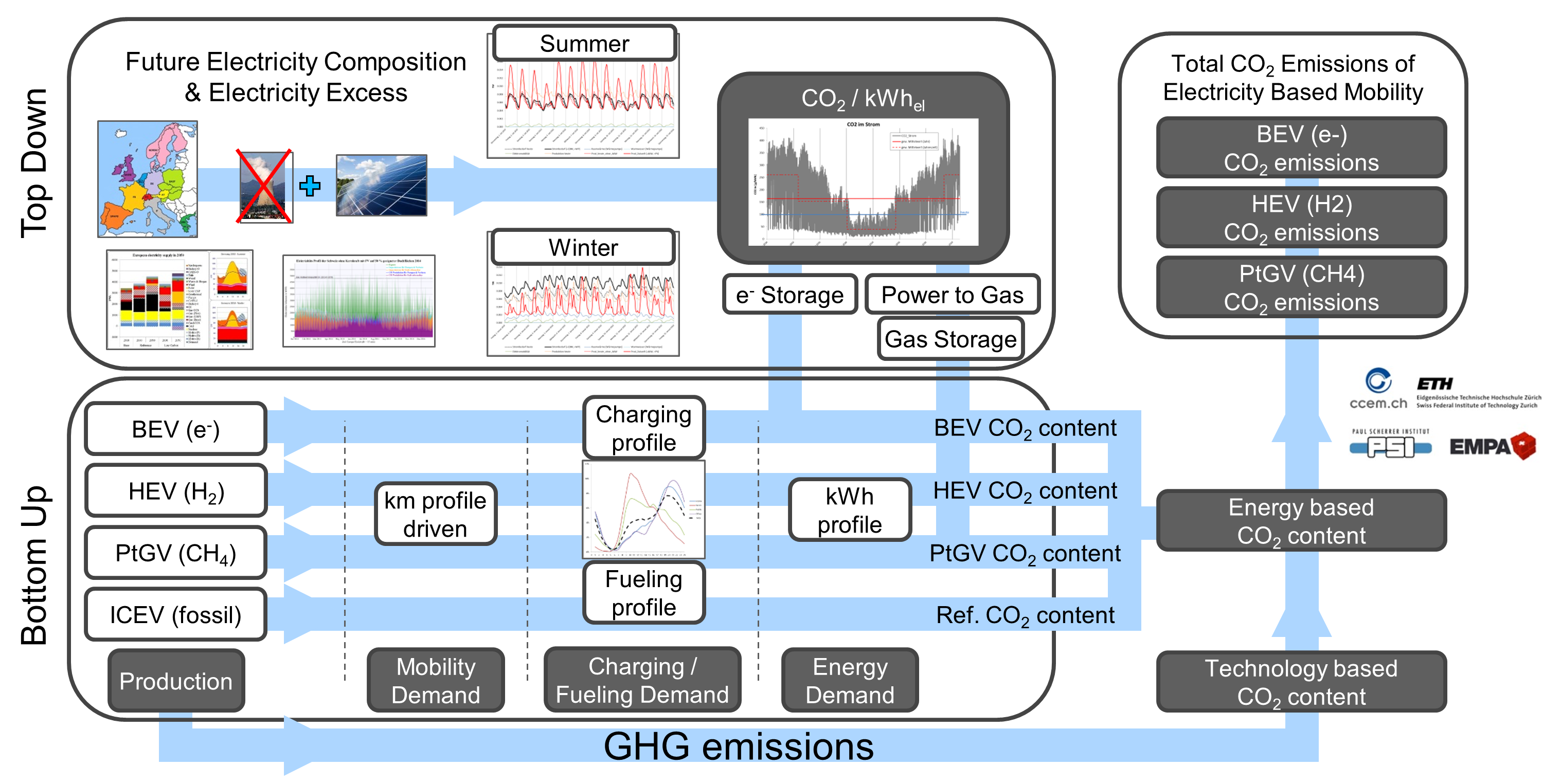Electricity Based Mobility
Mobility is currently the largest consumer of fossil energy in Switzerland and causes about one third of Switzerland‘s CO2 emissions. Therefore, substituting fossil energy carriers in the mobility sector by renewable ones is essential to meet the CO2 reduction goals of Switzerland. Three technologies, namely Battery Electric Vehicles (BEV), Fuel Cell Vehicles (FCV) and Synthetic Natural Gas Vehicles (SNGV) have the potential to replace gasoline/diesel-fueled internal combustion vehicles (ICE). All of these technologies use electricity as their primary energy source: BEV directly in the battery and electric engine; FCV and SNGV indirectly as hydrogen (H2) and synthetic natural gas (SNG) produced from electricity via Power-to-Gas (PtG) technologies [Ref]. However, their overall CO2 footprint depends on the CO2 intensity of the used electricity with high values in winter and low values in summer. High winter values are generally caused by importing CO2 intensive electricity from abroad, while low summer values are due to the abundance of renewable electricity (in particular from hydro) in this season.
In this project, commissioned by the Competence Center Energy and Mobility (CCEM), the actual CO2 content of a future electricity based mobility (EBM) is assessed in terms of CO2 emission per km driven. To this end, a Life Cycle Analysis (LCA) with respect to CO2 emissions is conducted on both vehicles and fuels. The CO2 intensity of the used electricity is based on different future passenger car fleet compositions, mobility demand and charging/fueling patterns. Moreover, strategies, such as time-delayed fuel production / electricity supply, are derived to minimize these grid-related CO2 emissions of EBM. A schematic project overview with the different tasks and outcomes is depicted in Fig. 1.

-
Share
